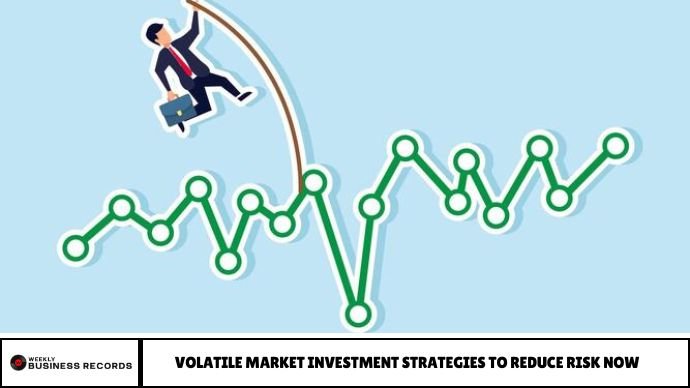Effective Investment Strategies for Volatile Market Conditions
Volatility in financial markets can be unsettling—even for experienced investors. Sudden price swings, uncertain economic data, and geopolitical shifts can rattle portfolios and challenge even well-established investment plans. Many investors panic, pulling out funds and abandoning their long-term goals. But volatility, when approached strategically, can also create opportunities.
Investment markets periodically experience phases of uncertainty. These fluctuations can be triggered by negative economic data, political instability, shifts in government policy, or issues affecting specific industry sectors.
During such times, sharp market declines can be unsettling—and may tempt investors to abandon their long-term strategy by selling off assets. While that reaction is understandable, it’s often not the most effective course of action.
Market volatility is typically temporary. In many cases, staying the course and resisting the urge to react emotionally can be one of the most beneficial strategies for long-term investors. Here’s why doing nothing may actually be the wisest move during periods of market turbulence.
- Protect your capital
- Maintain steady growth
- Manage emotional decision-making
- Adapt your investment approach for uncertainty
Abstract: Navigating Volatile Market Conditions With Confidence
Volatile markets can test investor confidence, but with the right approach, they don’t have to derail your financial goals. This guide outlines effective investment strategies for volatile conditions, helping you build a diversified, resilient portfolio. Learn how to apply risk-management principles, choose the right assets, and make informed decisions during unpredictable times.
Understanding Volatility in the Market
Market volatility refers to the frequency and magnitude of price fluctuations in financial markets. It’s a natural part of investing—but heightened periods of volatility, like those seen during major political events or economic downturns, can create significant short-term risks.
Key triggers of volatility:
- Interest rate changes
- Inflation reports
- Political instability or elections
- Global conflicts or trade tensions
- Unpredictable corporate earnings
According to a 2024 report by the CFA Institute, investor confidence drops by 35% during high-volatility months, reinforcing the need for a rational investment strategy.
1. Stick to a Long-Term Investment Plan
Reacting emotionally to short-term market dips often leads to selling low and buying high—the opposite of sound investing.
Instead:
- Set long-term goals and timelines
- Focus on historical market recovery patterns
- Revisit your plan quarterly, not daily
History shows that markets have always rebounded from downturns over time.
2. Diversify Your Portfolio Strategically
Diversification reduces the impact of poor performance in any single asset.
Key diversification strategies:
- Include a mix of stocks, bonds, and cash
- Spread across industries (tech, health, energy, etc.)
- Add international and domestic exposure
- Use real estate or commodities as inflation hedges
A well-diversified portfolio cushions your investments during market turbulence.
3. Use Dollar-Cost Averaging (DCA)
DCA involves investing a fixed amount at regular intervals—regardless of market conditions. This strategy:
- Minimizes the risk of poor market timing
- Smooths out purchase prices over time
- Encourages disciplined investing
In volatile markets, DCA helps reduce anxiety by removing the guesswork of when to invest.
4. Prioritize Defensive Assets and Dividend Stocks
Defensive sectors—like healthcare, consumer staples, and utilities—tend to remain stable during downturns.
Also, dividend-paying stocks can generate income even when prices fall, supporting portfolio stability.
Tip: Look for companies with strong balance sheets and consistent dividend history.
5. Maintain a Cash Buffer for Flexibility
Holding 5–15% of your portfolio in cash provides:
- Liquidity during market drops
- Buying opportunities at discounted prices
- Reduced pressure to sell assets at a loss
Cash isn’t about avoiding the market—it’s about having options when volatility strikes.
6. Avoid Emotional and Reactive Decisions
One of the greatest threats to your portfolio during volatile times is your own behavior.
To stay disciplined:
- Turn off financial news if it stresses you
- Use automated investing platforms
- Set pre-determined rebalancing dates
Discipline is more valuable than timing the market.
FAQs
1. Should I stop investing during market volatility?
No. Continuing to invest—especially through dollar-cost averaging—can position you for growth once the market recovers.
2. What is the safest investment during high volatility?
Short-term U.S. Treasury bonds, cash equivalents, and defensive stocks are considered relatively stable during volatility.
3. How often should I rebalance my portfolio?
Typically, every 6–12 months or when your asset allocation shifts significantly from your targets.
4. Are dividend stocks good during market downturns?
Yes. Dividend stocks offer regular income and are often found in stable, mature companies.
5. Can volatility ever be beneficial?
Yes. Market dips can create buying opportunities for undervalued assets, especially for long-term investors.
6. How much cash should I hold in volatile times?
Aim for 5–15% of your portfolio in liquid assets for flexibility and peace of mind.
Conclusion
Market volatility is inevitable—but it doesn’t have to undermine your investment success. By focusing on diversification, discipline, long-term planning, and smart cash management, you can weather uncertainty with confidence.
The most successful investors aren’t the ones who avoid risk—they’re the ones who understand it and act wisely in the face of it.


